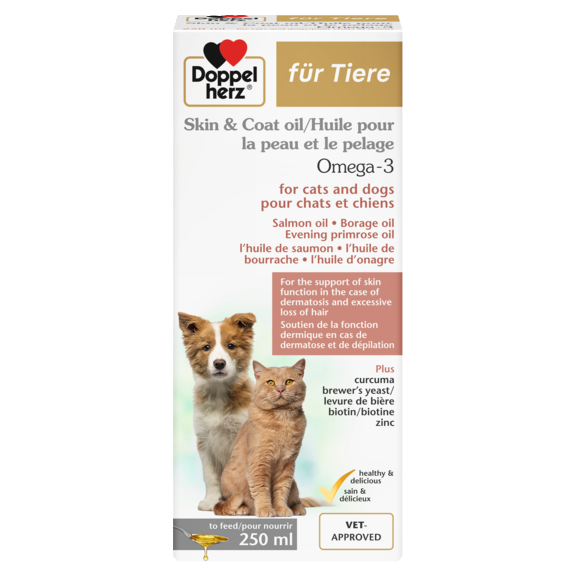Even if the so-called "hotspots", i.e allergy-related, localised skin symptoms in cats, occur rather rarely compared to dogs, suspicious areas should nevertheless be thoroughly examined and an allergy should also be ruled out using the exclusion procedure. If this is not successful and an allergic reaction is a probable cause; this can be treated by hyposensitisation or a change in diet. However, this can be a lengthy process or even mean lifelong therapy. The most important goal is to break the vicious circle of itching and renewed inflammation. For this purpose, medications such as cortisone or antihistamines are used if necessary, as they reliably relieve itching and inhibit inflammation. However, long-term cortisone therapy can be associated with side effects that may reduce the benefit of the therapy compared to the causative allergy itself.
What role do food allergies play?
Food allergies can not only manifest themselves in digestive disorders, but also affect the skin. For example, severe itching, redness or even inflammation may occur. In the later course of the disease, discolouration of the coat or even loss of coat may occur.
Diagnosing a feed allergy correctly is not always easy. In order to detect the disease with certainty, an elimination diet is necessary. For a period of at least eight weeks, the cat must be fed a ration with which it has never had any contact. This is to ensure that the cat cannot have developed an allergy to these foods. If the symptoms improve significantly or disappear completely after eight weeks, one of the previously fed food ingredients can be tested additionally. If symptoms reappear due to the addition of the previous food ingredients, it is almost certain that the cat is allergic to the food.
Blood tests, on the other hand, are not suitable for detecting food allergies. However, a negative result in the blood test can help to find suitable food for an exclusion diet, because the result indicates that the cat has not been in contact with these ingredients before.

